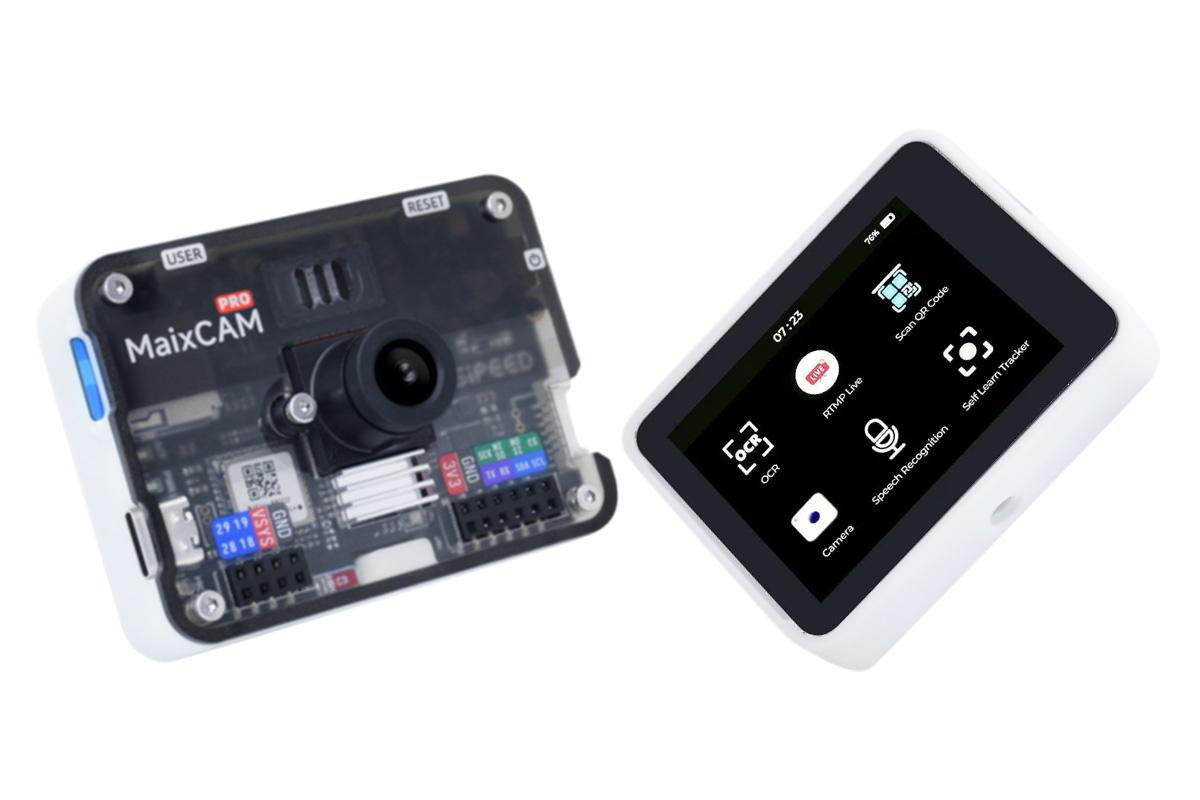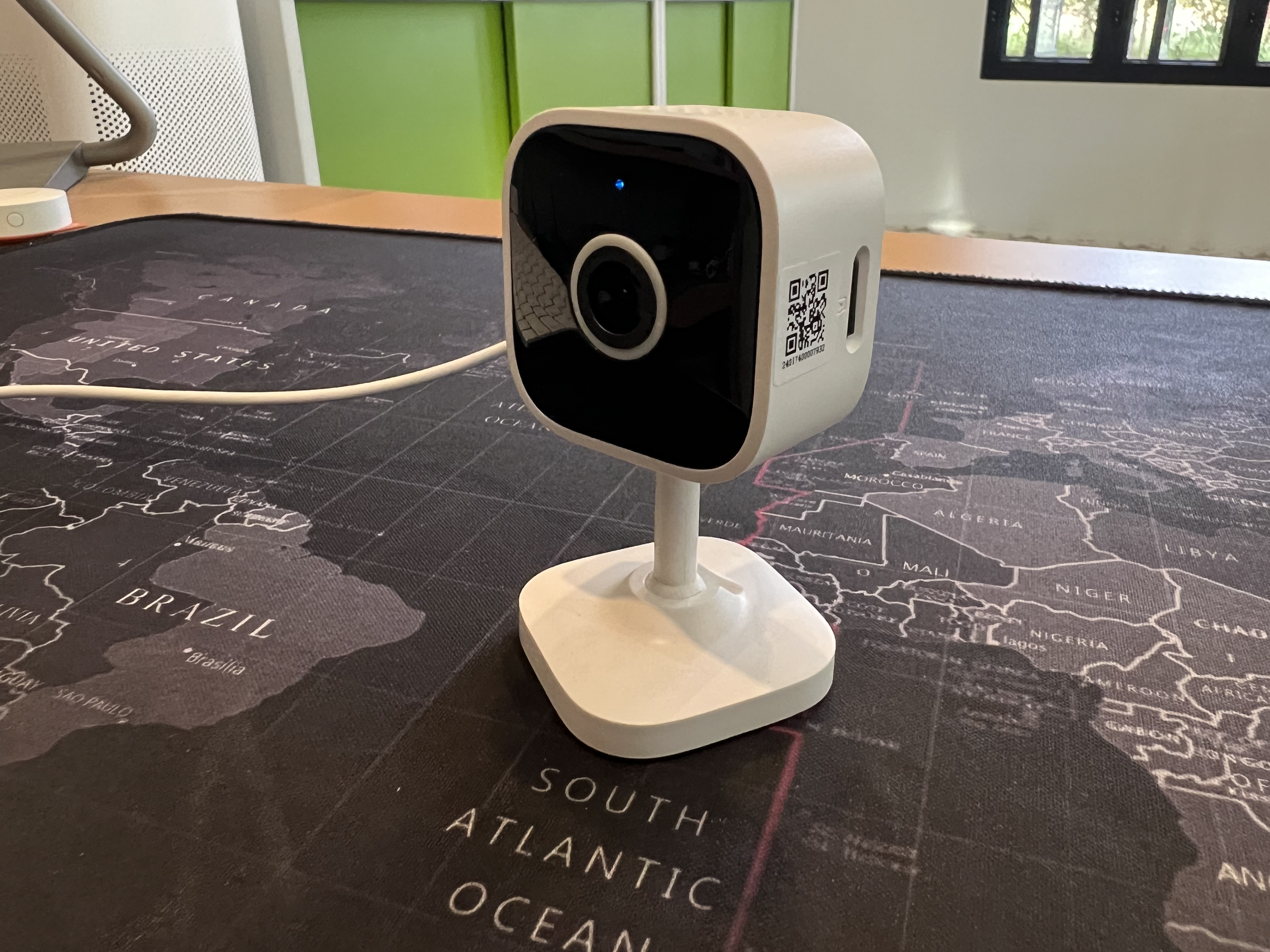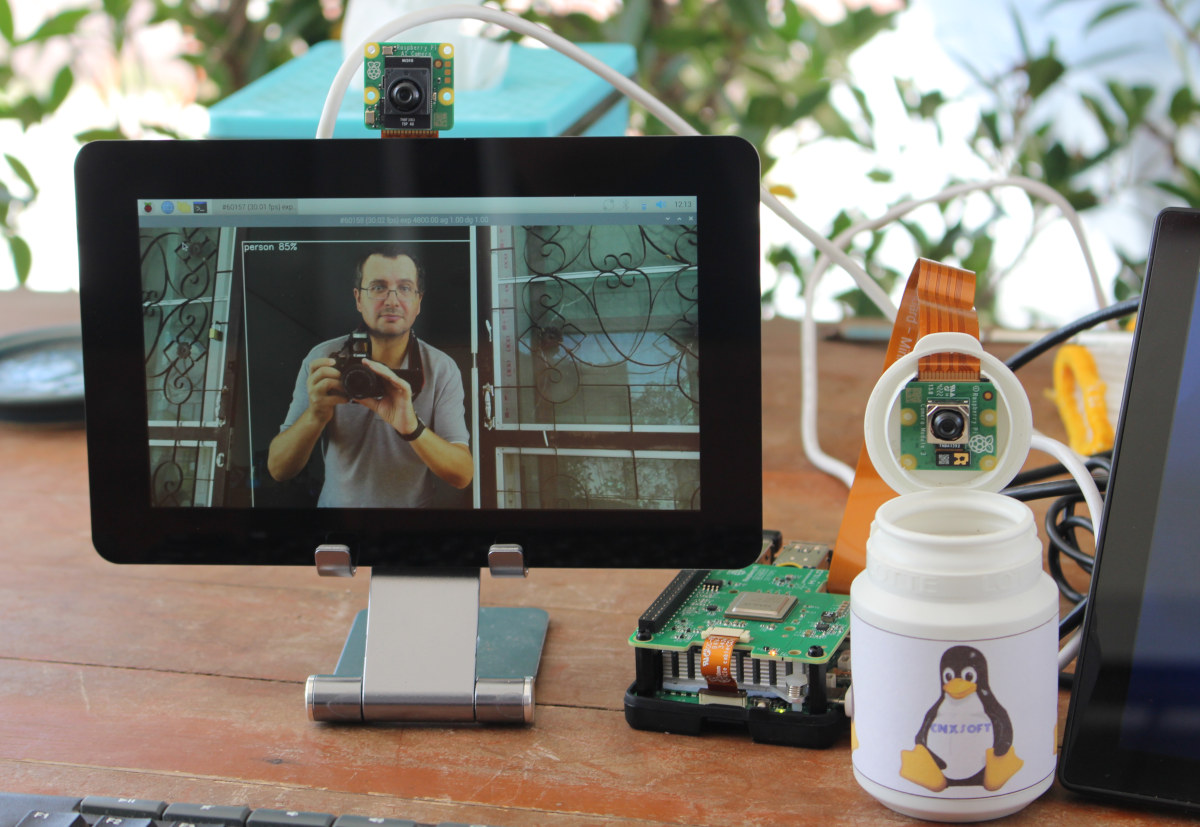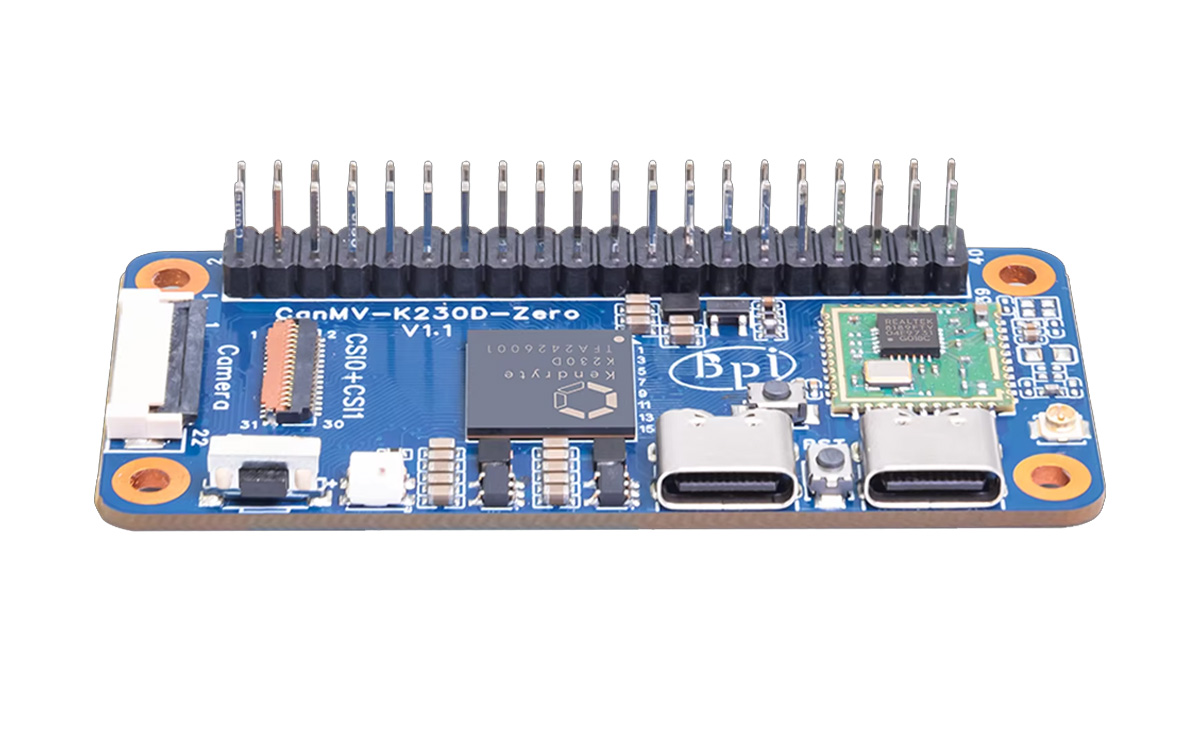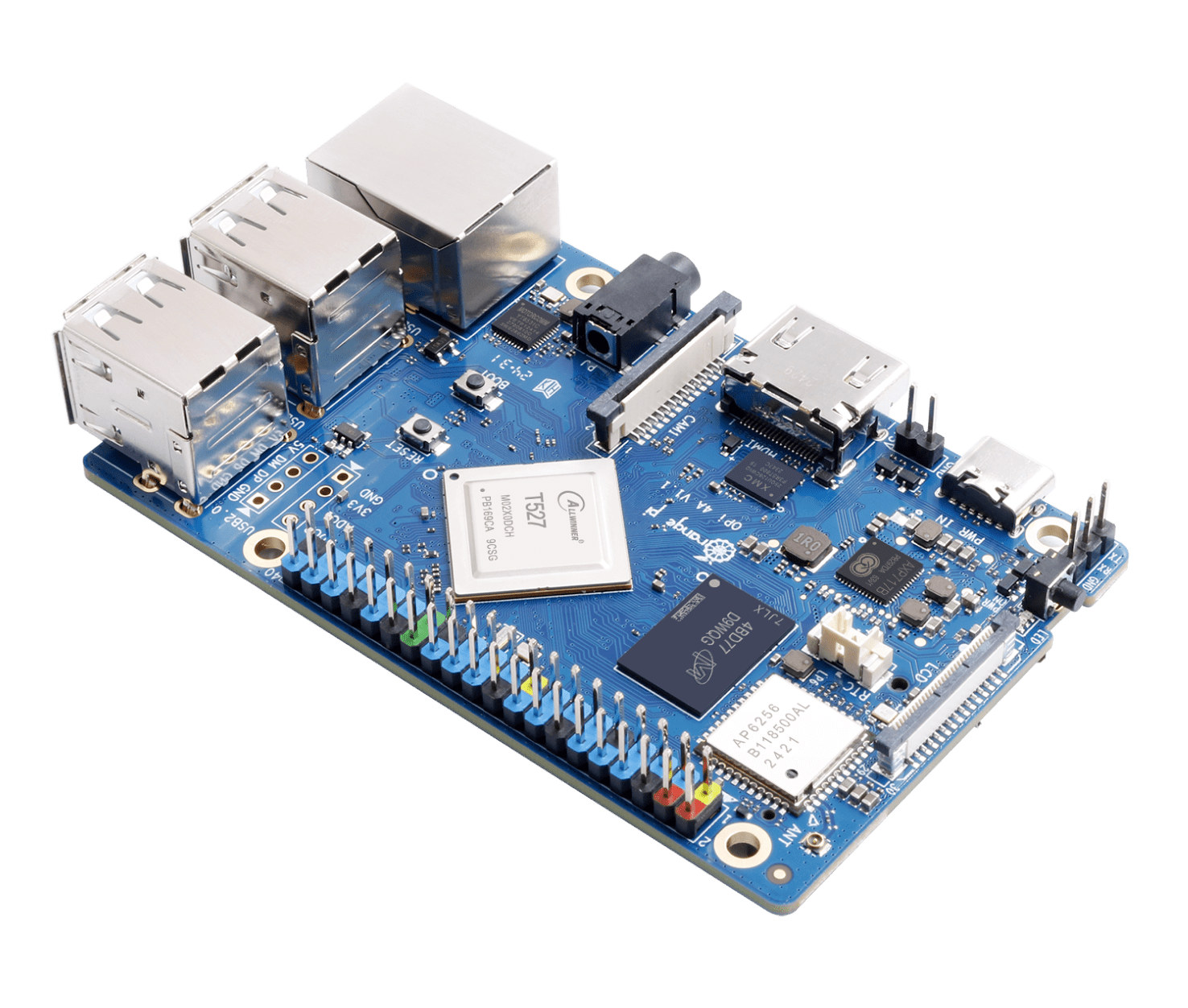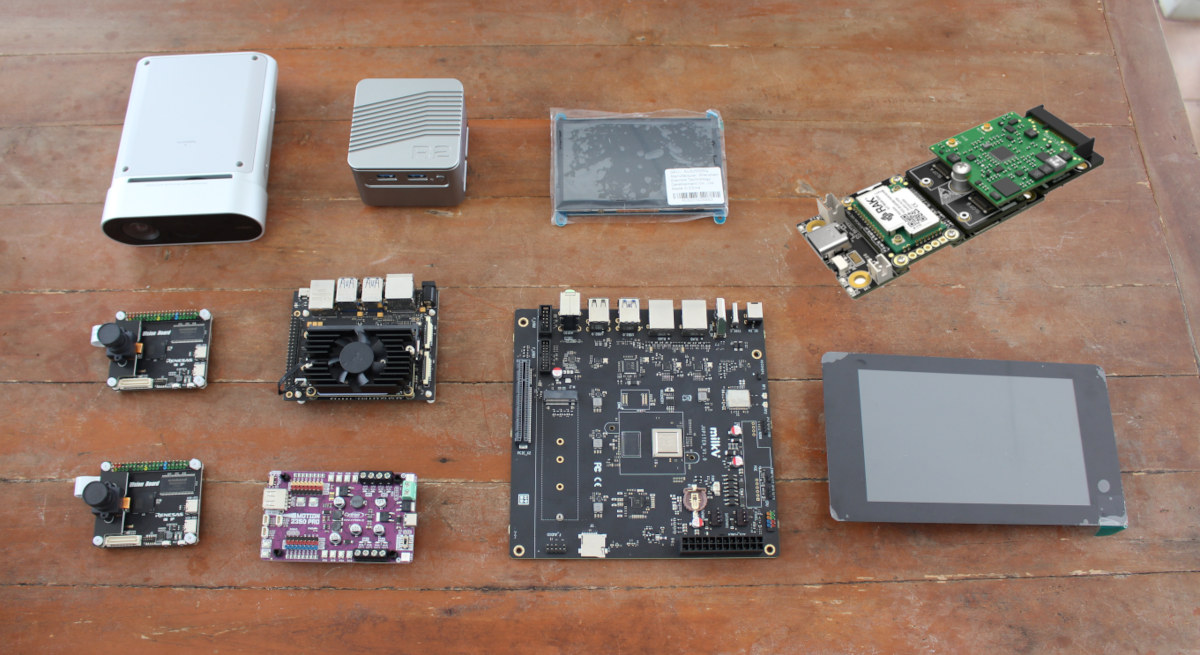Sipeed has recently released the MaixCAM-Pro AI camera devkit built around the SOPHGO SG2002 RISC-V (and Arm, and 8051) SoC which also features a 1 TOPS NPU for AI tasks. The module includes a 2.4-inch color touchscreen and supports up to a 5MP camera module. Other features include WiFi 6, BLE 5.4, optional Ethernet, built-in audio capabilities, a PMOD interface, GPIOs, and more. Additionally, it features an IMU, RTC chip, and AXP2101 power management for enhanced performance. The module is designed for AI vision, IoT, multimedia, and real-time processing applications. Just a few months back, Sipeed introduced the MaixCAM AI camera devkit, which is also built around the SOPHGO SG2002 RISC-V SoC. The new module improves on the MaixCAM with a redesigned PCB, upgraded casing, and various new features including a 2.4-inch IPS touchscreen (640×480), a 1W speaker, expanded IO interfaces, a power button, and an illumination LED. It also […]
SONOFF CAM Slim Gen2 Review – A tiny indoor security camera tested with eWeLink and Home Assistant
We have received the latest tiny indoor security camera from SONOFF: the second generation of the CAM Slim series known as the CAM Slim Gen2 (or CAM S2 for shorts). Some of you might remember the first-generation CAM Slim model reviewed by Jean-Luc about two years ago. The Gen2 version keeps the same 1080p resolution but comes with several upgraded features, including AI algorithms to distinguish living beings, customizable detection zones, customizable privacy zones, sleep mode, enhanced low-light image quality, and flexible storage management. Although it’s packed with several enhancements, its price is lower than the Gen1. Let’s delve into the details! SONOFF CAM Slim Gen2 unboxing Inside the box, you’ll find a compact manual, a USB-C cable, a mounting kit, and a sticker template acting as a drilling guide. The camera is smaller than your palm and comes mounted on a versatile, rotatable base, making installation in various positions […]
LILYGO T-Bao tiny AI robot combines ESP32 and Kendryte K210 RISC-V chip, features camera and display
The T-Bao AI robot is a compact embedded device/robot that combines an ESP32 and a K210 RISC-V microcontroller and can perform face recognition and robotics applications. This compact device features a 1.54-inch 240×240 capacitive touch screen, a 2MP OV2640 camera, a MAX98357A I2S audio amplifier, a DRV8833 motor driver, an MPU6050 6-axis motion sensor, and an AXP202 PMU for power management. Additionally, it supports USB charging, offers LEGO blocks compatibility, and can move around with integrated caster wheels. These features make it usable for educational projects, robotics, IoT applications, and embedded systems prototyping. LILYGO T-Bao specifications SoCs Kendryte K210 dual-core 64-bit RISC-V processor @ 400 MHz with 8MB on-chip RAM, various low-power AI accelerators delivering up to 0.5 TOPS ESP32-D0WDQ6-V3 dual-core Xtensa LX6 processor, 240 MHz, 16MB Flash, 8MB PSRAM Display – 1.54-inch capacitive touch LCD (240×240) Camera – 2MP OV2640 with rolling shutter, UXGA (1600 x 1200) resolution, 180-degree […]
Getting Started with Raspberry Pi AI HAT+ (26 TOPS) and Raspberry Pi AI camera
Raspberry Pi recently launched several AI products including the Raspberry Pi AI HAT+ for the Pi 5 with 13 TOPS or 26 TOPS of performance and the less powerful Raspberry Pi AI camera suitable for all Raspberry Pi SBC with a MIPI CSI connector. The company sent me samples of the AI HAT+ (26 TOPS) and the AI camera for review, as well as other accessories such as the Raspberry Pi Touch Display 2 and Raspberry Pi Bumper, so I’ll report my experience getting started mostly following the documentation for the AI HAT+ and AI camera. Hardware used for testing In this tutorial/review, I’ll use a Raspberry Pi 5 with the AI HAT+ and a Raspberry Pi Camera Module 3, while I’ll connect the AI camera to a Raspberry Pi 4. I also plan to use one of the boards with the new Touch Display 2. Let’s go through a […]
$29 Banana Pi BPI-CanMV-K230D-Zero features Kendryte K230D RISC-V SoC for AIoT applications
The Banana Pi BPI-CanMV-K230D-Zero is a compact and low-power single-board computer built around the Kendryte K230D dual-core XuanTie C908 RISC-V chip with an integrated third-generation Knowledge Process Unit (KPU) for AI computation. It follows the form factor of the Raspberry Pi Zero or Raspberry Pi Zero 2W board and targets IoT and ML applications. The SBC comes with 128MB of LPDDR4 RAM and uses a microSD card slot for storage. Additional features of this board include dual MIPI-CSI camera inputs for 4K video, a 40-pin GPIO header for I2C, UART, SPI, PWM, and more. Wireless features include 2.4GHz WiFi, USB 2.0 with OTG, and microphone support. These features make this SBC suitable for applications such as AI tasks such as image, video, and audio processing. Banana Pi BPI-CanMV-K230D-Zero Specifications SoC – Kendryte K230D CPU CPU1 – 64-bit RISC-V processor @ 1.6GHz with RVV 1.0 support CPU2 – 64-bit RISC-V processor […]
Orange Pi 4A low-cost octa-core SBC is powered by Allwinner T527 Cortex-A55 AI SoC with a 2TOPS NPU
Orange Pi 4A is a new low-cost credit card-size single board computer (SBC) powered by an Allwinner T527 octa-core Cortex-A55 processor with a 2TOP NPU and offered with either 2GB or 4GB RAM. The board also comes with multiple storage options: a 128 or 256Mbit SPI NOR flash for the bootloader, an eMMC socket for up to 128GB modules, an M.2 socket for NVMe SSDs, and a microSD card slot. It’s also equipped with four USB 2.0 ports, a gigabit Ethernet port, three display interfaces (HDMI, MIPI DSI, eDP), two camera interfaces, and a 40-pin “Raspberry Pi” header. The Orange Pi 4A is somewhat equivalent to an octa-core Raspberry Pi 3/4 with some extra features. Orange Pi 4A specifications: SoC – Allwinner T527 CPU Octa-core Arm Cortex-A55 @ up to 1.8GHz (four cores) and up to 1.42 GHz (four cores) XuanTie E906 RISC-V core @ 200MHz GPU – Arm Mali-G57 […]
Giveaway Week 2024 winners announced!
We’re now ready to announce the winners of CNX Software’s Giveaway Week 2024. We offered some of the review samples we tested (and some we did not test) in the last year, and for the fourth year running, RAKwireless also gave away two IoT development kits shipped directly to winners. This year’s prizes also included a RISC-V motherboard, a 3D depth camera, a few Arm development boards, two touchscreen displays, and an Alder Lake-N mini PC/router. All those products can be seen in the photo, minus some accessories. You’ll find more than seven devices because we organized the third Giveaway Week on CNX Software Thailand simultaneously with four prizes. We had seven winners on CNX Software: Jupiter RISC-V mini-ITX motherboard – François-Denis, Canada Orbbec Femto mega 3D depth and 4K RGB camera – Reifu, Japan RAKwireless Blues.ONE LoRaWAN, LTE-M, and NB-IoT devkit – OldCrow, Portugal Mixtile Core 3588E development kit […]
Forlinx launches NXP i.MX 95 SoM and development board with 10GbE, CAN Bus, RS485, and more
Forlinx FET-MX95xx-C is a system-on-module (SoM) based on NXP i.MX 95 SoC with up to six Cortex-A55 cores, an Arm Cortex-M7 real-time core clocked at 800 MHz, an Arm Cortex-M33 “safety” core clocked at 333 MHz, and equipped with 8GB LPDDR4x and 64GB eMMC flash. The company also provides the feature-rich OK-MX95xx-C development board based on the i.MX 95 module with a wide range of interfaces such as dual GbE, a 10GbE SFP+ cage, terminal blocks with RS485 and CAN Bus interface, three USB Type-A ports, two PCIe slots, and more. Forlinx FET-MX95xx-C system-on-module Specifications: SoC – NXP i.MX 9596 CPU 6x Arm Cortex-A55 application cores clocked at 1.8 GHz (industrial) with 32K I-cache and D-cache, 64KB L2 cache, and 512KB L3 cache Arm Cortex-M7 real-time core clocked at 800 MHz Arm Cortex-M33 safety core clocked at 333 MHz GPU – Arm Mali-G310 V2 GPU for 2D/3D acceleration with support […]


